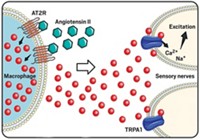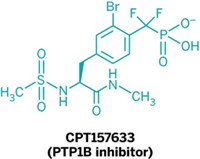Advertisement
Grab your lab coat. Let's get started
Welcome!
Welcome!
Create an account below to get 6 C&EN articles per month, receive newsletters and more - all free.
It seems this is your first time logging in online. Please enter the following information to continue.
As an ACS member you automatically get access to this site. All we need is few more details to create your reading experience.
Not you? Sign in with a different account.
Not you? Sign in with a different account.
ERROR 1
ERROR 1
ERROR 2
ERROR 2
ERROR 2
ERROR 2
ERROR 2
Password and Confirm password must match.
If you have an ACS member number, please enter it here so we can link this account to your membership. (optional)
ERROR 2
ACS values your privacy. By submitting your information, you are gaining access to C&EN and subscribing to our weekly newsletter. We use the information you provide to make your reading experience better, and we will never sell your data to third party members.
Neuroscience
Lysozyme may drive neuropathic pain
Blocking the enzyme could provide treatments without common side effects, such as addiction
by Alla Katsnelson, special to C&EN
August 9, 2019

A bacteria-digesting enzyme first discovered in human tears about a century ago may also have a not-so-helpful function: spurring chronic pain caused by nerve injury (Sci. Transl. Med. 2019, DOI: 10.1126/scitranslmed.aav4176). Designing drugs that block this enzyme, called lysozyme, may yield new treatments for chronic pain that are more effective than existing ones and lack the side effects of some of those drugs, such as addiction.
Even though lysozyme was one of the earliest proteins to be characterized, many aspects of its function have remained unknown. Glycobiologist Avadhesha Surolia at the Indian Institute of Science noticed that lysozome levels were usually high in many studies of chronic nerve pain—also called neuropathic pain.
He and his colleague, Saurabh Yadav, confirmed that in mice and rats with a form of neuropathic pain, lysozyme was indeed overexpressed. They also found that inhibiting the enzyme with a molecule called chitobiose—as well as silencing the gene that codes for the enzyme—relieves pain. When the researchers bathed sections of rat spinal cord in lysozyme, the nerves became stimulated, pointing to the molecule’s direct effect on neurons.
Lysozyme is best known for digesting the cell walls of bacteria. But the segment of the molecule that does that job is not the part that drives neuropathic pain, the researchers found, suggesting that a different mechanism is to blame. Additional experiments showed that the protein forms a complex with a molecule called annexin 2A, and together they activate an immune system receptor called TLR4, which is known to promote neuropathic pain. “Lysozyme actually recruits another protein to do its bidding,” Surolia says.
The researchers also probed lysozyme’s involvement in human neuropathic pain. Human neurons growing in a dish responded to its presence just like the nerves in the rat spinal cord sections. What’s more, the enzyme’s levels are elevated in the neural tissue of people who died from spinal injuries but are normal in tissue from people who died of unrelated causes.
Surolia’s lab is continuing to explore how lysozyme might drive neuropathic pain with the aim of developing a drug that targets it.
The hypothesis that lysozyme modulates TLR4 to trigger neuropathic pain is interesting but needs further validation, says Francesco Peri, a medicinal chemist at the University of Milano-Bicocca.
Surolia points out that nerve tissue from people with neurodegenerative disorders such as Alzheimer’s disease, Parkinson’s disease, and multiple sclerosis also has elevated levels of lysozyme. He thinks it could be interesting to look at whether the enzyme plays a molecular role in those conditions.





Join the conversation
Contact the reporter
Submit a Letter to the Editor for publication
Engage with us on Twitter